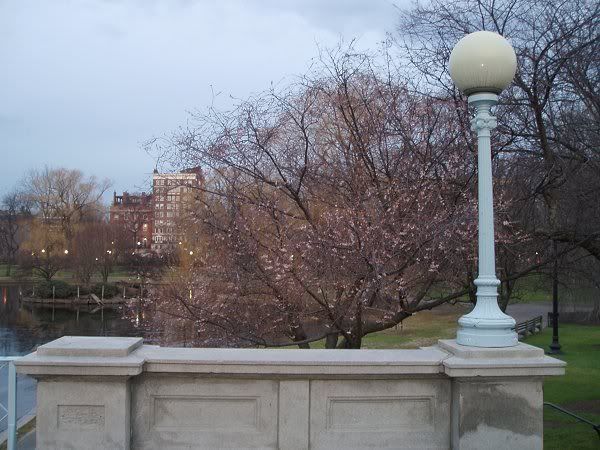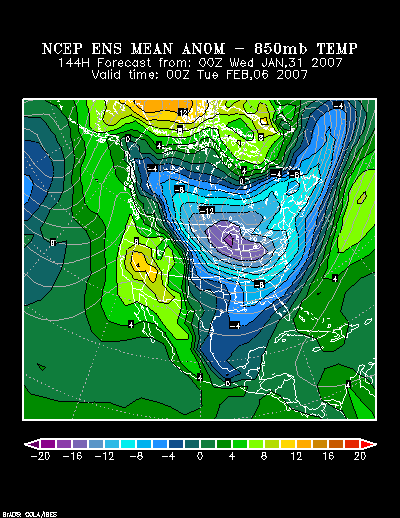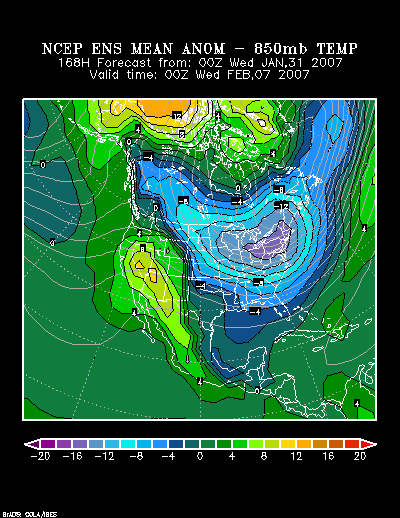NCEP Ensemble 500 mb Anomalies at 240 hours:
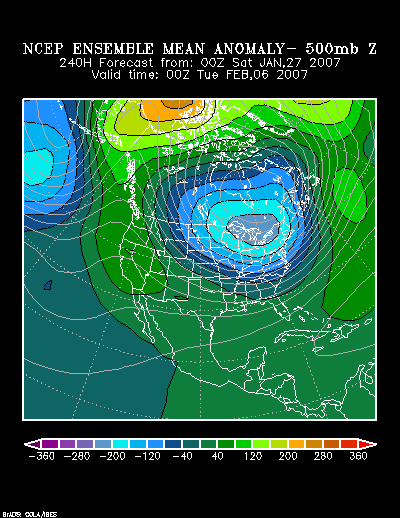
Composite Analog 500 mb Anomalies:
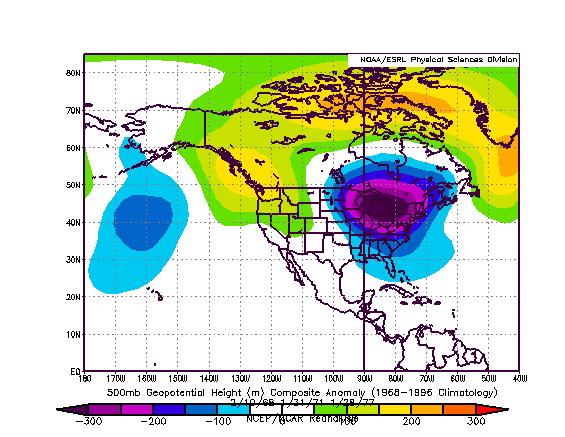
What a difference a month makes!
The following were the NCEP Ensemble 500 mb Anomalies forecast for 312 hours from December 25, 2006:
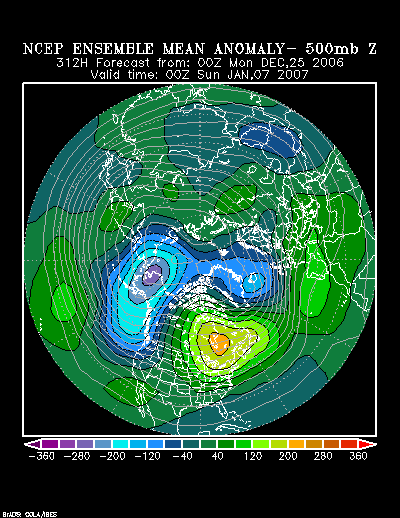
The NCEP Ensemble mean 850 mb temperature forecast for 240 hours shows a large area of 8°C-12°C (14.4F-21.6F) below normal temperatures.
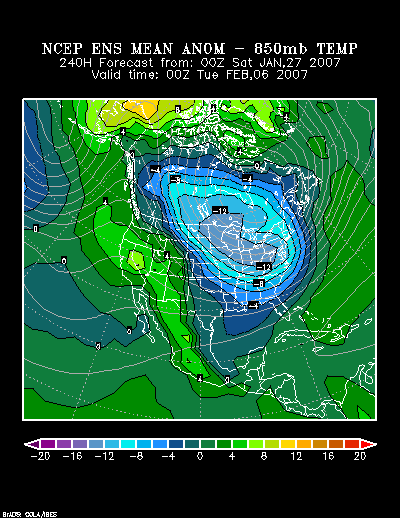
In terms of standard deviations, there is a large area of cold that is 1.5 or more standard deviations below normal. The Canadian Ensemble 10-day forecast posted on January 27 also shows a large area of cold that is in the range of 1.5 to 1.75 standard deviations below normal:
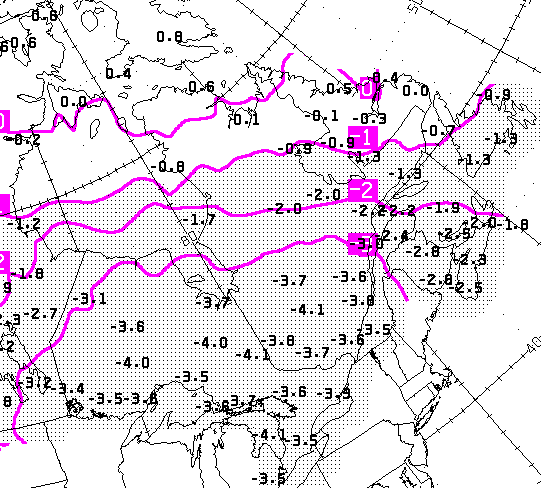
Note: Each contour on the above map is the equivalent of 0.43 standard deviations e.g., “3” = 1.29 standard deviations (0.43*3).
During the three analog periods from which the 500 mb composite analog was constructed, the lowest temperature reached in select cities was:
February 10-14, 1968:
Atlanta: 15°
Boston: 9°
Burlington: -13°
Detroit: 5°
Indianapolis: 4°
New York City: 8°
Philadelphia: 10°
Raleigh: 8°
Richmond: 8°
Washington, DC (DCA): 12°
January 31-February 3, 1971:
Atlanta: 16°
Boston: 5°
Burlington: -25°
Detroit: -9°
Indianapolis: -5°
New York City: 6°
Philadelphia: 6°
Raleigh: 5°
Richmond: 3°
Washington, DC (DCA): 11°
January 28-February 2, 1977:
Atlanta: 8°
Boston: 7°
Burlington: -8°
Detroit: -8°
Indianapolis: -11°
New York City: 1°
Philadelphia: 1°
Raleigh: 7°
Richmond: 11°
Washington, DC (DCA): 8°
At this time, with some modification for the smaller area of severe cold over the past 30 days relative to what existed before these outbreaks, readings just a little above those noted above should be seen as offering some insight into the potential magnitude of the 2/4-8 cold period at its coldest: -12° or below in Burlington, 2° or below in Detroit, and 5° or below in Indianapolis. Both Detroit and Indianapolis could have one or more subzero lows. Boston, New York City, and Philadelphia should see one or more low temperatures in the single digits. Of those three cities, Boston might have a chance to achieve a subzero low based on climatology and not the above historic Arctic outbreaks. In New York City, such a low is very unlikely. In Washington, DC and Richmond the lowest temperature should come to 14° or lower. Raleigh should see a minimum temperature in the teens or lower and a single-digit low is possible. Atlanta should see a minimum temperature in the teens.
In short, a number of the above cities will likely see their coldest readings of the winter. For purposes of comparison, the coldest temperatures for Winter 2006-07 for the above cities are:
Atlanta: 19°
Boston: 3°
Burlington: -15°
Detroit: 8°
Indianapolis: 7°
New York City: 9°
Philadelphia: 10°
Raleigh: 16°
Richmond: 17°
Washington, DC (DCA): 15°
 The posts in this forum are NOT official forecast and should not be used as such. They are just the opinion of the poster and may or may not be backed by sound meteorological data. They are NOT endorsed by any professional institution or
The posts in this forum are NOT official forecast and should not be used as such. They are just the opinion of the poster and may or may not be backed by sound meteorological data. They are NOT endorsed by any professional institution or 




